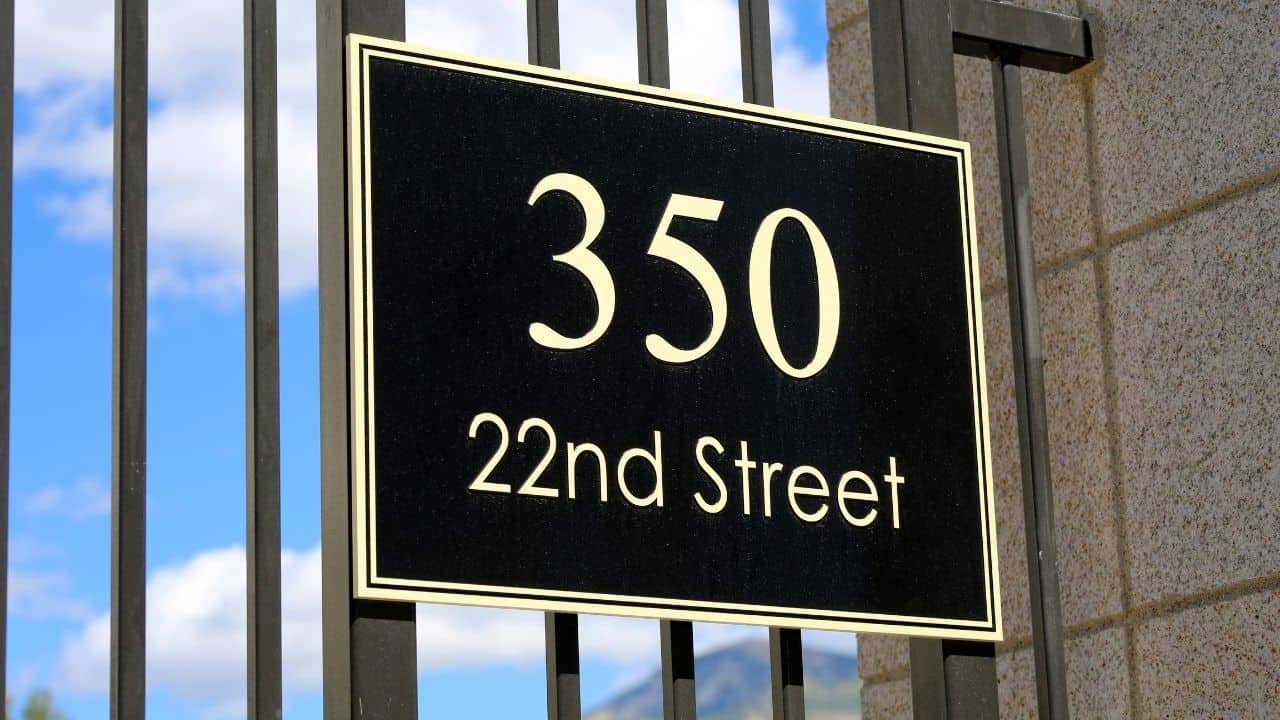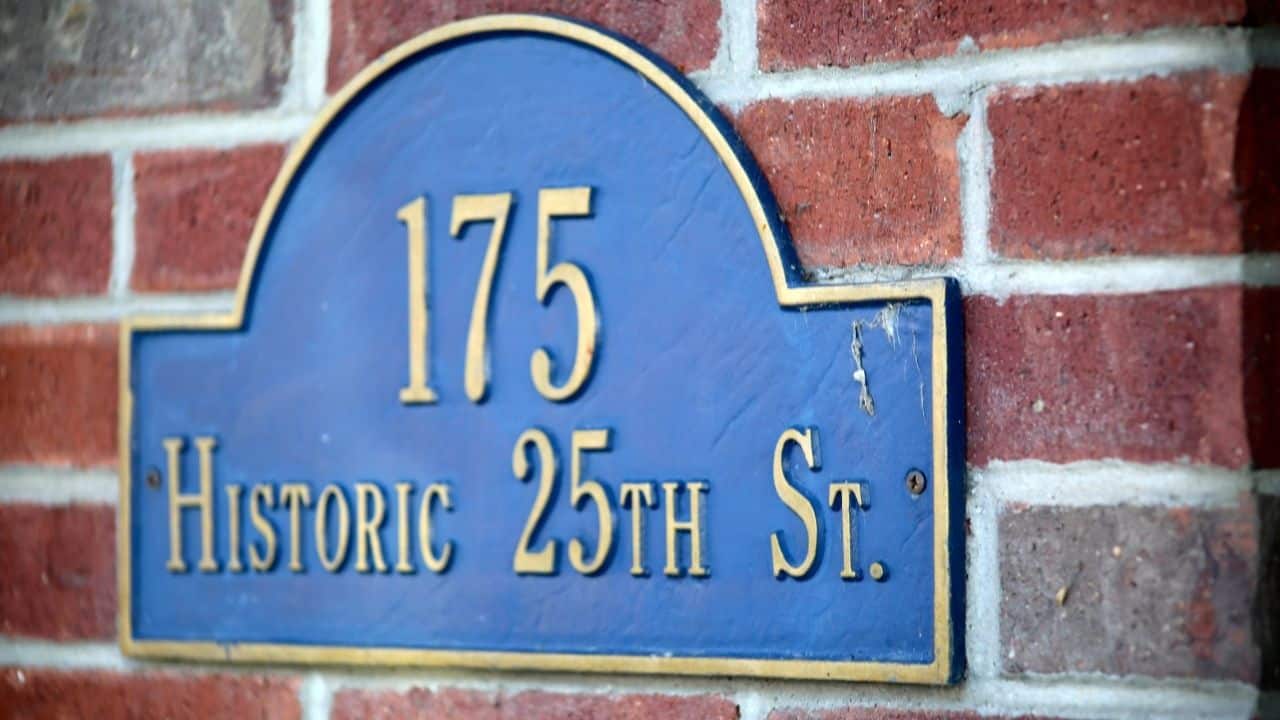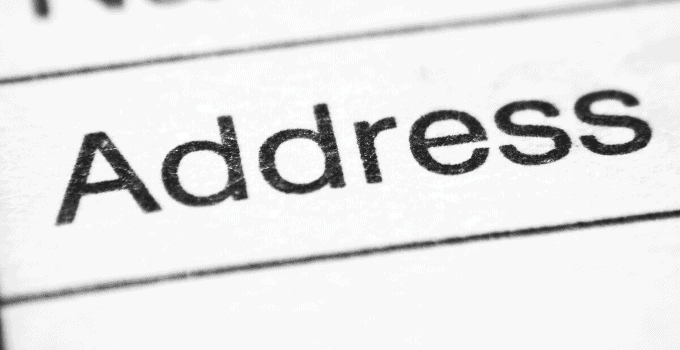Everyone knows their address, but it’s a fact that many people experience anxiety when asked to enter that address into a form or write it on an envelope.
What should be a simple matter of putting in a street name, a street number and possibly apartment or suite number becomes unnecessarily complicated by arcane terms like “address line 1” and requirements that you split your address into a number of separate pieces.
Of course, things are even more confusing if you happen to have a nonstandard address or if you’re trying to get something sent to a specific department at a company or other organization.
Although the terminology used by forms such as “Address Line 1” and “Current Address from Date” can be indeed confusing, entering your address is actually fairly easy.
In this post, we’ll take a look at the parts of an address and clear up this mystifying mess.
Before we start, it’s worth noting that addresses are formulated differently around the world.
In the interest of clarity, any description below applies to addresses in the United States of America.
[toc]
What is address line 1?
In short, “address line 1” is just the first part of your address. Simply put in the number of your building and the name of the street where you live for address line 1.
When you write an address formally, you split the various parts of it onto several lines to make mail delivery easier and improve legibility.
Other information, such as apartment number, goes elsewhere, so you don’t need to worry about it here.
The parts of an address

Although even young children can recite their address, the address system we use today is the end result of close to five hundred years of evolution.
In the United States, formal efforts to normalize addresses began in the late 1800s and today are nearly complete.
The history is interesting but unnecessary if all you want to do is understand how to report your address.
Address Line 1
The most important thing about your address is your building number and street name.
If you think about it from the perspective of someone delivering mail, this makes perfect sense.
Before you worry about how to find the specific apartment someone lives in, or which department they work for, you need to make sure you’re at least on the right street.
Likewise, if you were giving a friend directions to your apartment on the phone, you wouldn’t just say, “It’s apartment 2b.”
First, you need to provide directions to your specific street and inform your friend which building in the apartment complex is yours.
Address line 1, then, can be seen as a kind of preview of the full address.
Simply write or type the street number of your building or house, leave a space, and then finish off the line with your street name.
You shouldn’t add a comma along with either of the items in address line 1.
Building Number

Your building number is a number assigned to each house, apartment building, office or other type of building to help people tell which is which.
If you aren’t sure what your building number is, try checking somewhere on the side of the building.
As a general rule, building numbers are typically painted or attached to the buildings they represent.
Other common places for building numbers are the curb at the edge of the street or the mailbox.
No matter where your number is located, it should be visible from the road.
When you are typing or writing the building number as part of address line 1, make sure you are using roman numerals instead of spelling out each number as a word.
That is, if your house number is 326 you should write down 326 instead of three-hundred and twenty-six.
Some building numbers are hyphenated, but this is uncommon.
If your number does have a hyphen, be sure to include it when filling out a form or addressing an envelope.
The number 32-684 is very different from the number 32684!
Street Number

The street name is another easy-to-understand part of your address. Much like how we tell buildings apart by their numbers, it has long been common practice to name streets.
You most likely already know the name of the street where you live, but if you aren’t sure you can walk to the nearest intersection and check the name listed on the street sign there.
Street signs typically list both names, so make sure you are writing down the street name that faces you when you are standing on your own street.
Some street names are a single word, while others may contain several. If you have a street name with multiple words, you should capitalize each, as street names are proper nouns.
That is, the name “Doaks Ferry Road” is “Doaks Ferry” and not “Doaks ferry.”
Road, RD or Rd?

One part of a street name that can be a little confusing is how to abbreviate the word that follows the name of your street. This part of address line 1 is called a “street suffix.”
There are literally hundreds of different street suffixes. You might wonder why there are so many words for the type of street.
Like a house number and a street name, suffixes help with clarity. In this case, you can use a suffix to tell two streets with similar names apart.
There are lots of suffixes, and lots of ways to abbreviate them. Square can be abbreviated as Sq or Sqr, while highway might appear as Highwy, Hwy or Hway, just to name a few.
Other suffixes, like lane, only have a single abbreviation, Ln.
The good news is that anything you choose is likely to work just fine in a form or on an address, Regardless of your preferred style of abbreviation.
Likewise, you can capitalize all the letters in the abbreviation or just some of them and it doesn’t matter much. If you feel particularly anxious about abbreviations, just spell out the word completely.
You might also see abbreviated street prefixes, such as NW or SW for north-west and south-west, respectively, to differentiate streets in different parts of a town.
These follow the same rules as street suffixes, although you would not typically write them out.
Address line 1 examples
Now that we’ve covered what goes into the first line of an address, let’s look at a few correctly written examples.
126 Star Quarry Rd
Although this street name is poetic, it is correctly written. Notice that each word in the street name is capitalized and that the word “road” has been abbreviated to “Rd.” The building number is written as a numeral, rather than spelled as a word.
26 Rural Ave
Again, we have a number represented as a numeral followed by the street name and suffix. Here the suffix “avenue” has been abbreviated as “Ave,” but it could also be “Av” or just spelled out completely.
P.O. Boxes – Address Line 1 or Address Line 2?
When sending a parcel to a personal P.O. box, the P.O. box number should be listed in the address field line 1. You should write the words “P.O. box” and then include the P.O. box number within the same line. For a business P.O. box, it should be listed in the address line 2.
If the recipient of the package is a singular entity, such as a person with a personal P.O. box, they would not have a company name. In this situation, the P.O. box would go in address line 1 in place of the street name and building number.
P.O. is usually written in capital letters, with a period following each letter. Because of the anonymity a P.O. box provides, the street address of the P.O. box is not needed.
Examples:
John Smith
P.O Box 12345
Boston, MA 06745
P.O. Box 98765
Queens, New York 34586
If the recipient is a business that has a business name, then the business name would go in address line 1, moving the P.O. box down to address line 2. This looks like the following examples.
Examples:
John SmithBig Acting Inc.
P.O. Box 12345
Boston, MA 06745
Jane DoeFloral Solutions
P.O. Box 98765
Queens, New York 34586
Now that this special case is understood, let’s make sure the rest of the address reads well and is properly written.
What else goes into an address?
After address line 1, you will likely need to add in the city name where the building is located, as well as the two-letter abbreviation for the state and the zip code of the city within that state.
Forms may ask for these items separately, by name, or they may ask for “address line 2.” In the latter case, simply write the city name and state abbreviation, followed by the zip code.
Optionally, you can add a comma in between the city name and state, but this is not strictly required.
Of course, don’t forget that if you are addressing an envelope or package you will also need to include the name of the recipient!
Examples
158 Chalmers Ave
Goat Springs ME 12345
ATTN: Shipping Dept
96 Cherry Ln
Long Beach CA 90301
These are two examples of complete addresses as they might appear on an envelope.
The address itself makes up the bottom two lines of the address, so that address line 1 is in the middle of each.
The first is an example of a home address. It starts with the name of the recipient, then lists the house number, street name and street suffix on line 1 before finishing with the city name, state abbreviation and zip code on address line 2.
The second address is for a business. Instead of a person’s name, the item is addressed to a specific department with the abbreviation ATTN, meaning “Attention.”
Although there are various other ways of writing out an address, they are beyond the scope of this blog post.
To make a long story short, remember that the next time you’re faced with something asking you for “address line 1,” all you need is the building number, street name and street suffix of the address.

Hey fellow Linguaholics! It’s me, Marcel. I am the proud owner of linguaholic.com. Languages have always been my passion and I have studied Linguistics, Computational Linguistics and Sinology at the University of Zurich. It is my utmost pleasure to share with all of you guys what I know about languages and linguistics in general.

